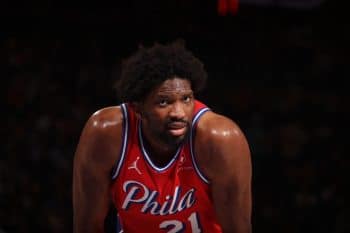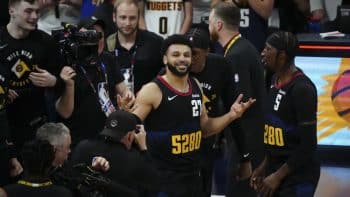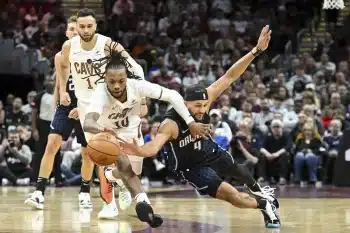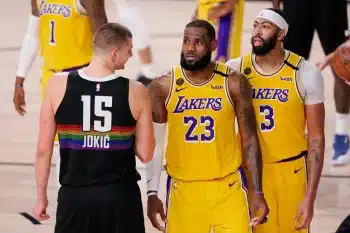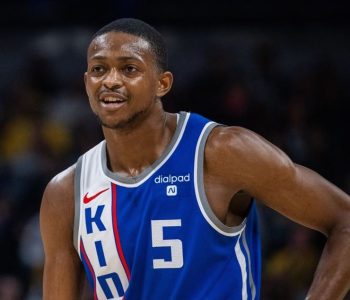NBA
NBA Daily: Brandon Ingram’s Growth A Perfect Fit Next To Zion Williamson

Zion Williamson screamed when Brandon Ingram connected on the tough pull-up jumper that gave the New Orleans Pelicans a last-second lead over the Utah Jazz.
The rookie was watching from the bench as his team’s breakout star inbounded the ball, then used an Allen Iverson-esque cut to catch the ball high up the right wing on the other side of the floor. Ingram immediately took one dribble with his right hand. As Royce O’Neale trailed on his hip, Ingram put the ball down once more with his left, using his ridiculous strides to create enough separation to get to his spot and launch.
Buckets.
It was Ingram’s final make of the night, one among a bevy of highlight-reel plays he made during the best performance of his career to date. His score also put the Pelicans up one with just 0.2 seconds remaining, an advantage they needed to secure a win in overtime after Rudy Gobert was fouled as time expired on the ensuing possession, tying the game by making one of two at the line.
Williamson’s roar no doubt came in the context of those circumstances more than any other. Ingram capped another eye-popping outing with a would-be game-winning shot reserved for superstars, and New Orleans continued its strong recent play by beating the league’s hottest team in front of a raucous home crowd.
Obviously, that’s more than enough justification for Williamson’s enthusiasm. But as the most hyped draft prospect since LeBron James readies to make his long-awaited NBA debut next week, Ingram’s ongoing evolution into his ideal co-star gives Williamson and the Pelicans ample reason to be excited – and the reason for rest of the league to be scared.
A sizable portion of Williamson’s theoretical value stems from his unique two-way versatility. It’s universally agreed upon that New Orleans, especially going forward, will be best served slotting him at center in lineups that maximize his athletic gifts. But Williamson surely won’t be up to the task of being his team’s last line of defense as a rookie, and even prime Draymond Green didn’t start at the five until the Golden State Warriors were threatened in the playoffs. It simply asks too much of undersized bigs to play without a traditional center for 48 minutes.
The thing about Ingram’s rapid development, though, is that it further weaponizes Williamson and the Pelicans no matter what position the latter is playing.
Ingram’s growth is layered and multi-dimensional. He’s clearly sturdier than he was a year ago, continuing to fill out his body at 22 years old. His handle is tighter, providing additional comfort with the ball he’s using to create passing lanes that otherwise wouldn’t exist. But the main source of Ingram’s sweeping improvement is even more obvious than thicker shoulders and a defter handle: shooting.
That’s no secret. Ingram is shooting 40.6 percent on 6.2 three-point attempts per game this season, easily surpassing career norms. He’s making 46.8 percent of his shots from mid-range, another career-high and borderline elite mark league-wide.
Still, skepticism about the longevity of Ingram’s newfound shooting prowess abounds. Understandably so, too. Last season, he joined DeMar DeRozan and Tony Parker as the only non-bigs in the NBA to use more than 23 percent of their team’s possessions while posting a three-point rate below .13. A half-season sample size doesn’t erase that recent history, nor Ingram’s similar struggles to make an impact from deep during his first two years in the league.
What does? His 86 percent shooting from the free throw line, nearly 20 points higher than his combined career number before the season tipped off. The influence of lauded New Orleans shooting coach Fred Vinson can’t be discounted, either.
Bottom line: All indications suggest Ingram’s rise as a shooter is real.
Even if the scope of his growth was limited to that development alone, Ingram would still project as a snug fit next to Williamson. His 42.8 percent accuracy on catch-and-shoot triples ensures the floor will be properly spaced when Alvin Gentry slots Williamson at power forward, and it will leave the paint wide open when the Pelicans go small with Ingram and Williamson up front.
Williamson, like all high-usage attackers with a shaky jumper, will always be best served surrounded by four legitimate threats from deep. Still, it goes without saying he’ll get more comfortable navigating the tight offensive confines of playing in a traditional lineup as he gains experience. What’s far less certain is whether Williamson will ever become the type of player equipped to close games with the ball in his hands.
Ingram, as he so forcefully affirmed against the Jazz, already is. The high release point on his shot allows him to get a makable look off no matter how the defense is playing him. Ingram still has room to grow as a playmaker, but this season he’s passing out of drives more often than Kawhi Leonard and Giannis Antetokounmpo, and he has a better understanding of mapping the floor in pick-and-roll play.
Ingram may top out as a great team’s second-best player. New Orleans would obviously prefer that he ultimately becomes capable of shepherding a championship-level offense all by himself. But that’s what’s so enviable about the Pelicans’ long-term prospects. If Williamson comes close to reaching his potential, they’ll be good enough to compete for titles even if Ingram’s development stalls – and the former proves unable to play alpha dog in crunch time.
What that means for this season remains to be seen. But as New Orleans, buoyed by the addition of Williamson, claws for a playoff berth over its remainder, pay special attention to the team’s identity at the end of close games. Those high-pressure situations won’t just be a showcase for the incredible gifts of the Pelicans’ young stars, but could serve as a harbinger of how Ingram and Williamson will co-exist in crunch time once they’re leading New Orleans to annual title contention.
